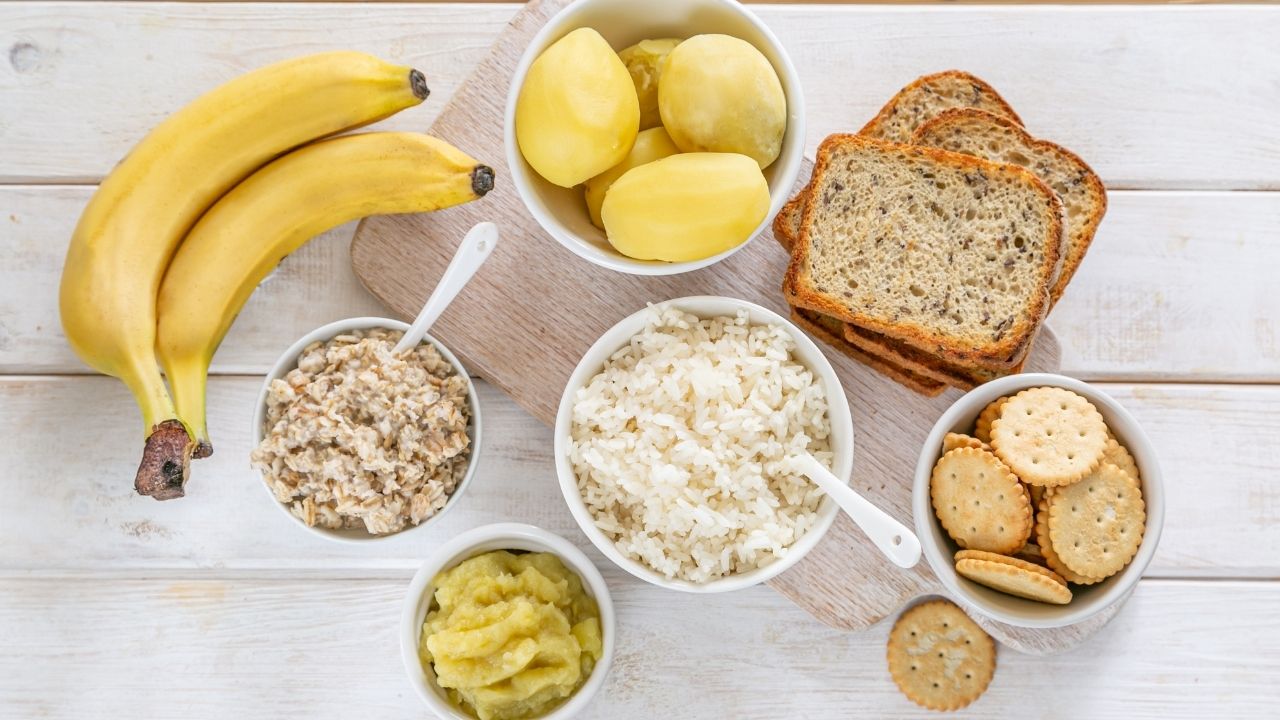
MyFoodPlate is an easy way to envision a healthy lifestyle. It is an easy-to-use system that takes into account a range of food categories. The system recommends that at least half of your food plate come from these food groups. MyPlate not only helps you make healthier choices but also teaches how to balance your portions so you feel fuller longer. MyPlate lacks fruit, which is an important part of breakfast. This prevents people also from eating fruit at dinner and lunch.
You'll need other sources for protein and vitamins if you don’t eat meat or poultry, fish, or dairy. The red portion of the plate may be slightly smaller than that of the green. You will need to ensure you eat enough fruits, vegetables and other foods to fill the entire plate. In addition, you'll want to eat as many fruits and vegetables as possible. You should have no more that one to two pieces of fruits on your plate.

In order to get all the nutrients you require, you should eat more than just fruit and vegetables. You should choose different proteins from meat if your plan is to eat a lot. You can't replace meat but you can substitute for it with tofu and other high-protein sources. It is recommended that you eat a wide range of low fat dairy products and other dairy foods in addition.
MyPlate replaced the MyPyramid image. Critics had criticized MyPyramid for being too abstract and difficult to understand. The new icon emphasizes fruits and vegetables at fifty percent and makes it easier to comprehend the nutritional guidelines. The original Food Pyramid did not work and didn't include the recommended daily amount for many foods. MyPlate was created in order to make it as simple as possible to find nutritional information.
The MyPlate doesn't work perfectly. You should try to eat at least one of these four food groups each day. Then you should limit yourself from consuming too much sugar and saturated fat. A lot of fruits and veggies is a good way to avoid developing heart disease. You may have more heart health with the MyPlate than you think. There is no one right or wrong way of eating. Start eating healthily today by following MyPlate

MyPlate is not only a healthy way to eat fruits and veggies, but also contains fiber. Fiber is an essential part of your diet. It is abundantly found in fruits & vegetables. You need fiber to maintain your overall health. Moreover, MyPlate has a MyPlate icon that shows you what food groups you need for a balanced diet. MyPlate offers many health benefits. It can be used to build a healthier diet and promote a healthier lifestyle.
FAQ
Is being cold good for your immune system.
Cold causes a decrease in immune system strength. This is because white blood cells are less effective at fighting infection. You will feel less pain if you are cold.
How can I reduce my blood pressure
It is important to first understand what high blood pressure is. Next, you will need to determine what is causing high blood pressure. These could include taking medication, eating less salt and losing weight.
Make sure you're getting enough exercise. If you don't have time for regular exercise, then try walking as often as possible.
You should join a gym if you are unhappy with your exercise routine. You'll probably want to join a gym where there are other people who share your goals. It is easier to adhere to a fitness routine when someone else will be there with you.
Is cold an indication of a weaker immune system?
It's been said that there are two kinds of people in the world; those who love winter and those who hate it. You might wonder why you feel so miserable in the cold, no matter how much you love or hate winter.
The answer lies in the fact that our bodies are designed to function best during warm weather. In fact, we evolved to thrive in hot climates because that's where most of our food sources are located.
However, our environment is quite different than that of our ancestors. We spend a lot more time indoors, and are often exposed at extreme temperatures (cold and hot), and we eat processed foods over fresh.
Our bodies aren’t accustomed to such extremes. It means that when we do go outdoors, we are often tired, sluggish or even sick.
However, there are ways to counter these effects. The best way to avoid these problems is to ensure that your body stays hydrated throughout the day. Drinking plenty of water will help you keep your body hydrated and flush out toxins.
Also, ensure you eat healthy food. Your body will stay at its best when you eat healthy foods. This is especially true for people who spend long hours indoors.
Take a few minutes every morning to meditate. Meditation helps you relax your mind and body, which makes it easier to deal with stress and illness.
How can I live my best life everyday?
To live a happy life, the first step is to discover what makes you happy. You can then work backwards once you know what makes YOU happy. You can also ask other people what they do to live the best lives possible every day.
You can also find books such as "How to Live Your Best Life" written by Dr. Wayne Dyer. He talks about how to find happiness and fulfillment at all stages of our lives.
How does weight change with age?
How do you determine if your bodyweight is changing?
When there is more muscle mass than fat, weight loss can occur. This means that calories must be consumed at a rate greater than energy. Activity levels are the most common reason for weight loss. Other factors include stress, illness and pregnancy. If there is more body fat than muscle mass, then weight gain can occur. It occurs when people consume more calories each day than they use. Overeating, increased physical activity and hormonal changes are all common reasons.
Our bodies lose weight mainly because we eat less calories that we burn. Exercise regularly increases your metabolism rate, which allows you to burn more calories every day. This does not necessarily mean that we will get thinner. What is more important is whether or not our body is losing or gaining weight. We will lose weight if we burn more calories than we consume. But if you consume more calories than you burn, you're actually storing them for fat.
As we age we tend to be slower in moving and thus we don't move nearly as much. We also tend to eat less food than we did when we were younger. We tend to gain weight. On the other hand, we have more muscle mass and look larger than we actually are.
Without weighing yourself each week, there is no way to know how much weight you have lost. There are many options for measuring your weight. There are many ways to measure your weight. You can check your waist, hips, thighs, arms and legs. Some people prefer to use a bathroom scale while others prefer to measure with tape.
Track your progress by measuring your waistline and weighing yourself every week. You can also take pictures of yourself every few months to see how far you've come.
You can also check your height online to find out how many pounds you have. For example, if you're 5'10" tall and weigh 180 pounds, you'd probably weigh 180 pounds.
How do I get enough vitamins?
You can get most of the daily nutrients you need through your diet. However, if you are deficient in any particular vitamin, taking supplements can help. A multivitamin can contain all the vitamins that you need. You can also purchase individual vitamins at your local drugstore.
Talk to your doctor to find out which foods are rich in vitamins. The best sources of vitamins K, E, and C are found in dark green leafy veggies such as spinach and broccoli, kale.
If you are not sure how much vitamin you should be consuming, ask your doctor. Based on your medical history, and your current health status, your doctor will recommend the right dosage.
Statistics
- This article received 11 testimonials and 86% of readers who voted found it helpful, earning it our reader-approved status. (wikihow.com)
- The Dietary Guidelines for Americans recommend keeping added sugar intake below 10% of your daily calorie intake, while the World Health Organization recommends slashing added sugars to 5% or less of your daily calories for optimal health (59Trusted (healthline.com)
- WHO recommends consuming less than 5% of total energy intake for additional health benefits. (who.int)
- nutrients.[17]X Research sourceWhole grains to try include: 100% whole wheat pasta and bread, brown rice, whole grain oats, farro, millet, quinoa, and barley. (wikihow.com)
External Links
How To
What does the term "vitamins" mean?
Vitamins are organic compounds naturally found in food. Vitamins are essential for our bodies to absorb nutrients from the foods we eat. Vitamins cannot be made by the body; they must be taken from food.
There are two types: water-soluble and fat-soluble vitamins. Water-soluble vitamins dissolve easily when they are dissolved in water. These include vitamin C (thiamine), Vitamin B1 (riboflavin), Vitamin B2 (riboflavin), Vitamin B3 (niacin), Vitamin B6 (pyridoxine), Vitamin C, B1 (thiamine), Vitamin B2 (riboflavin), Vitamin B3 (niacin), and Vitamin B6 (pyridoxine). The liver and fat soluble vitamins are stored within the liver and in fatty tissue. These include vitamin D, E and K, as well as beta carotene.
Vitamins can be classified by their biological activity. There are eight main groups of vitamins.
-
A - Essential for healthy growth and health maintenance.
-
C - essential for nerve function and energy generation.
-
D - Essential for healthy teeth and bones.
-
E is needed for good reproduction and vision.
-
K - Essential for healthy muscles and nerves.
-
P – vital for building strong bones.
-
Q - aids digestion and absorption of iron.
-
R - necessary for making red blood cells.
The recommended daily allowance of vitamins (RDA), varies according to age, gender, physical condition, and other factors. The U.S. Food and Drug Administration (FDA) sets the RDA values.
For adults 19 years and over, the RDA of vitamin A is 400mg per day. For fetal development, pregnant women need 600 mg per day. Children ages 1-8 require 900 micrograms per day. Babies under one-year old require 700 mg per day. Between 9 and 12 years of age, however, this drops to 500 mg per day.
Children between the ages of 1-18 need 800 micrograms per daily for obesity, while children overweight require 1000 micrograms. Children underweight or obese will need 1200 mg per day.
Children 4-8 years old who have anemia must consume 2200 micrograms of Vitamin C daily.
2000 micrograms per person is necessary for general health. Women who are pregnant or breastfeeding need 3000 micrograms per day due to increased nutrient requirements.
Adults over 70 need 1500 micrograms daily, as they lose 10% of their muscle every ten years.
Women who are pregnant, nursing or breastfeeding need more than the RDA. Pregnant women require 4000 micrograms daily during pregnancy, and 2500 micrograms every day after birth. Breastfeeding mothers need 5000 mg per day when breastmilk is being produced.